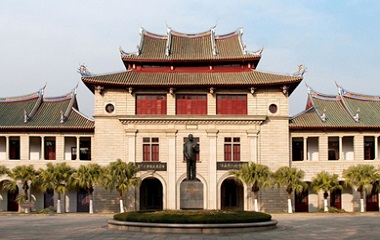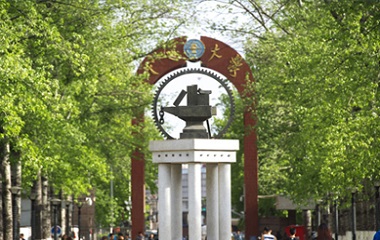[Malaysia] Tan Jia Yang, Wuhan University

I still remember the first time when I saw Chinese characters. Those square characters were boring and hard to understand. I often complained about the complexity of Chinese characters. The strokes, radical components and pinyin (pronunciation) of Chinese characters vary radically. Any minor difference might lead to quite different meaning. I started to realize the wisdom of Chinese characters in each stroke after I came to study in China. Each stroke in Chinese characters embodies the humanistic concerns and glorious 5,000-year civilization of China.
Last semester I took a general course Culture of Chinese Character in the College of International Education as an elective course. I learned the origins, evolution, structure, art and culture of Chinese characters in this course, as if I walked into a culture treasure house. I started to know how long the history of Chinese characters was.
From inscriptions on Oracle shells to regular script, the long evolution of Chinese characters displays the aesthetic pursuit of Chinese people as well as the cultural connotation of Chinese characters. Whether indicative, pictographic, pictophonetic or associative characters, they all display the muscles and charm of Chinese characters. Like a bridge, Chinese characters connect China with me, through which I began to understand the 5,000-year everlasting history of China.
Through Chinese characters, I learned the charm of the broad and profound Chinese culture. For example, the Chinese character “夫” (Fu), means adult, and it is made up of the character “人” (means human) and two sticks (hair clasps), which vividly depicts a human whose hairs are bundled by hair clasps. In ancient China, an adult ceremony to bundle his hairs with clasps will be held for a kid when he turns 20. The Dragon “龙” (Long) in the 12 Chinese Zodiac embodies characteristics of multiple animals, such as horns of deer, eyes of shrimps, body of snakes and claws of eagles.
This fully indicates the inclusiveness of different cultures of Chinese people. Therefore, Chinese people are also called the descents of dragons.

The rich connotations of Chinese characters are beyond comparison with other characters. For example, the world-known telecom manufacturer Huawei, whose Chinese name means Promising China; “宇宙” (Yu Zhou) means the universe, its first character “宇” (Yu) means a spatial unit and “宙” (Zhou) means a time unit, therefore, space and time being combined is the universe.
The beauty of Chinese character lies not only in its physical structure, but also in its connotation. We can experience the charm of Chinese characters in our daily life.
For example, there are lots of places being named with poetic charms, such as Chang’an (means everlasting peace), Yunmeng (means dreams on clouds) and Jinling (means golden hills); Chinese medicine names are also very poetic, such as Zisu (literally means purple leaves), Banxia (literally means mid-summer) and Chanyi (literally means the clothes of cicadas); for seasons, there are Mangzhong (literally means the time to plant grains), Bailu (means the time to have white dews) and Guyu (literally means grain rain); even every month has a beautiful name, such as February is called the month of apricot, the month of flowers or the month of beauty etc.

Now in my eyes, Chinese characters are not only for writing and communication, and they are colorful, with emotions and vitality. I love “阳” (Yang, means sunshine) the most, because Yang means positive and shining!
Thanks to Chinese characters, which not only show me how vivid and glorious Chinese culture is, but also displays the prosperity of China.
Until now its splendor and glory is going on…
The story is from "My Beautiful Encounter with China" Essay Competition organized by the Chinese Service Center for Scholarly Exchanges (CSCSE).










